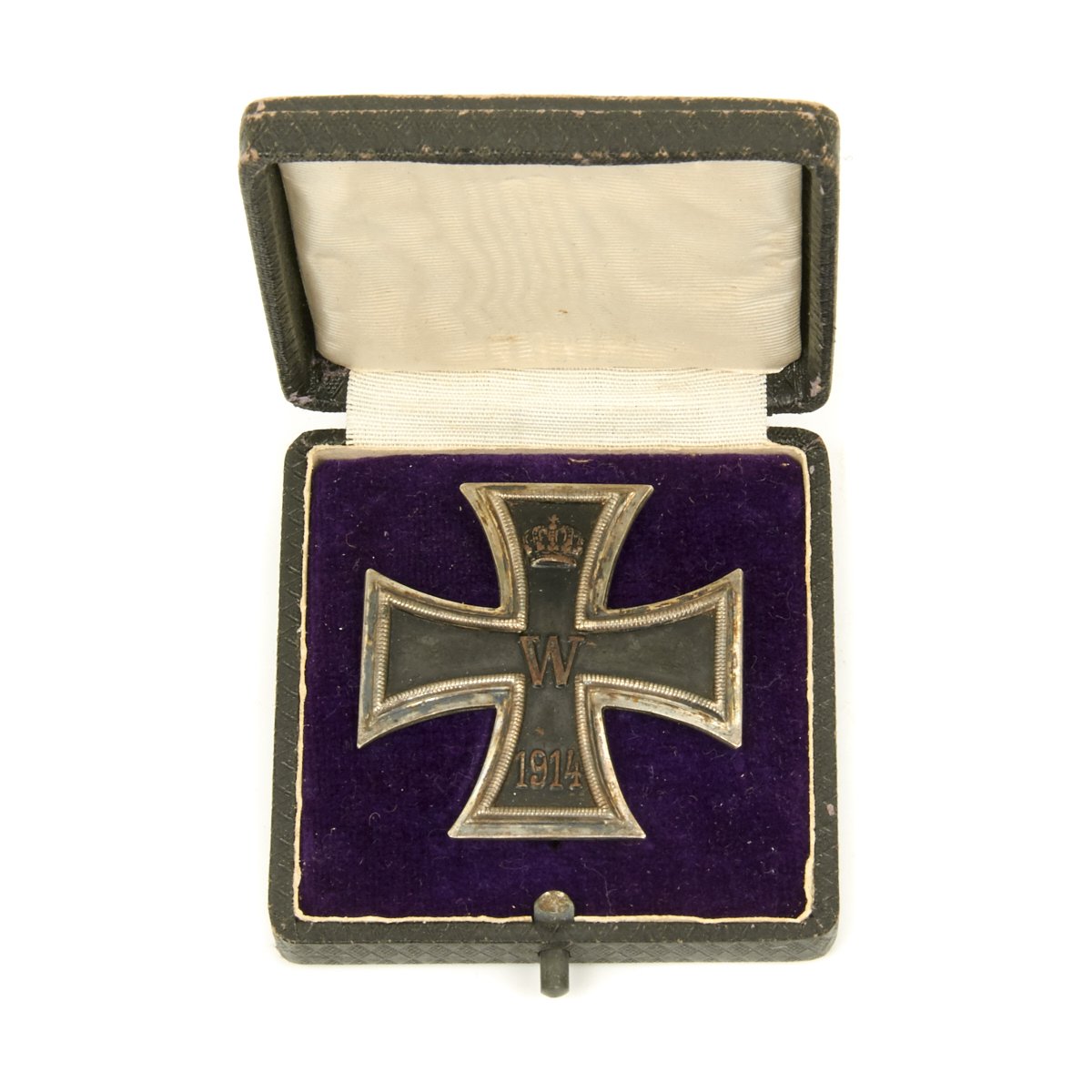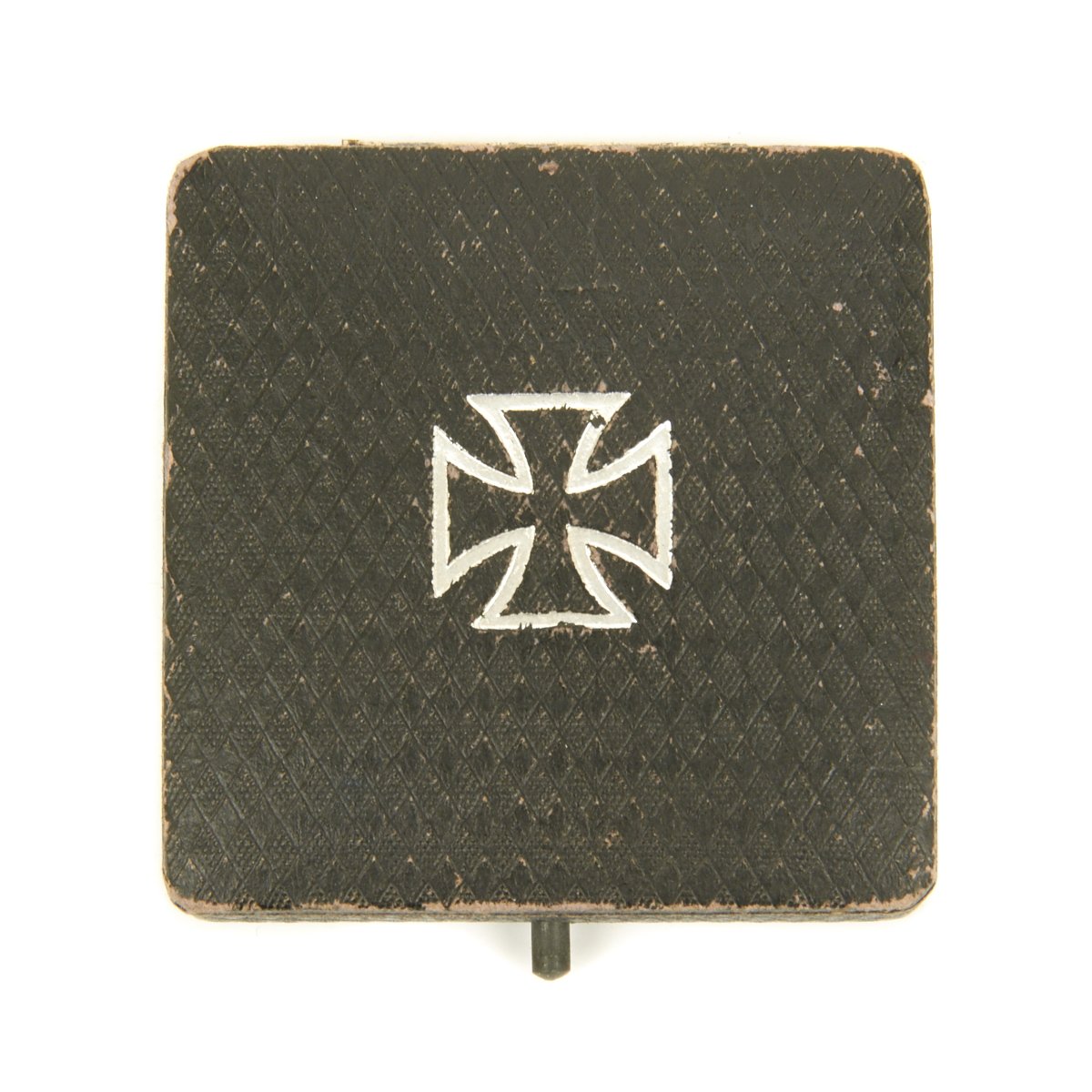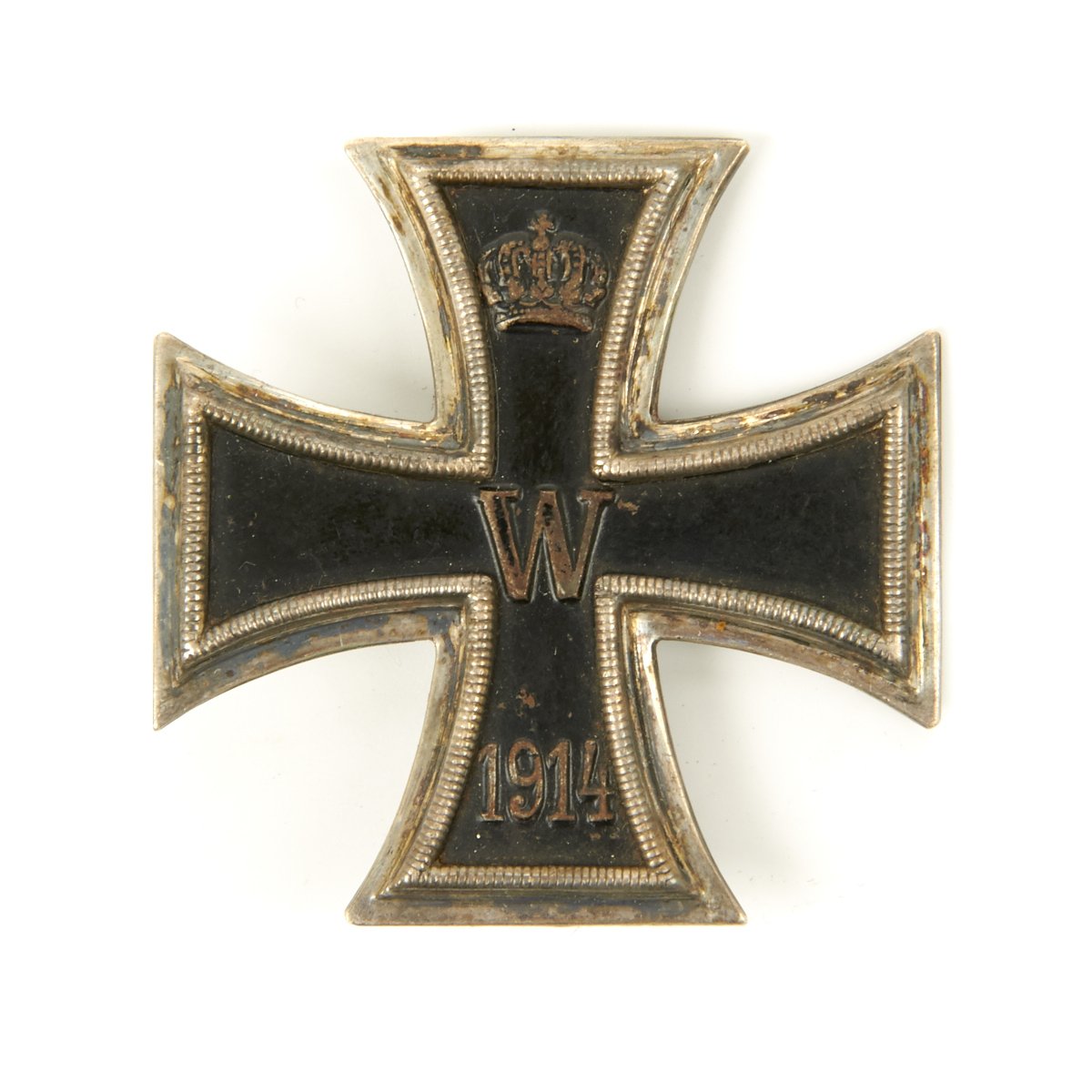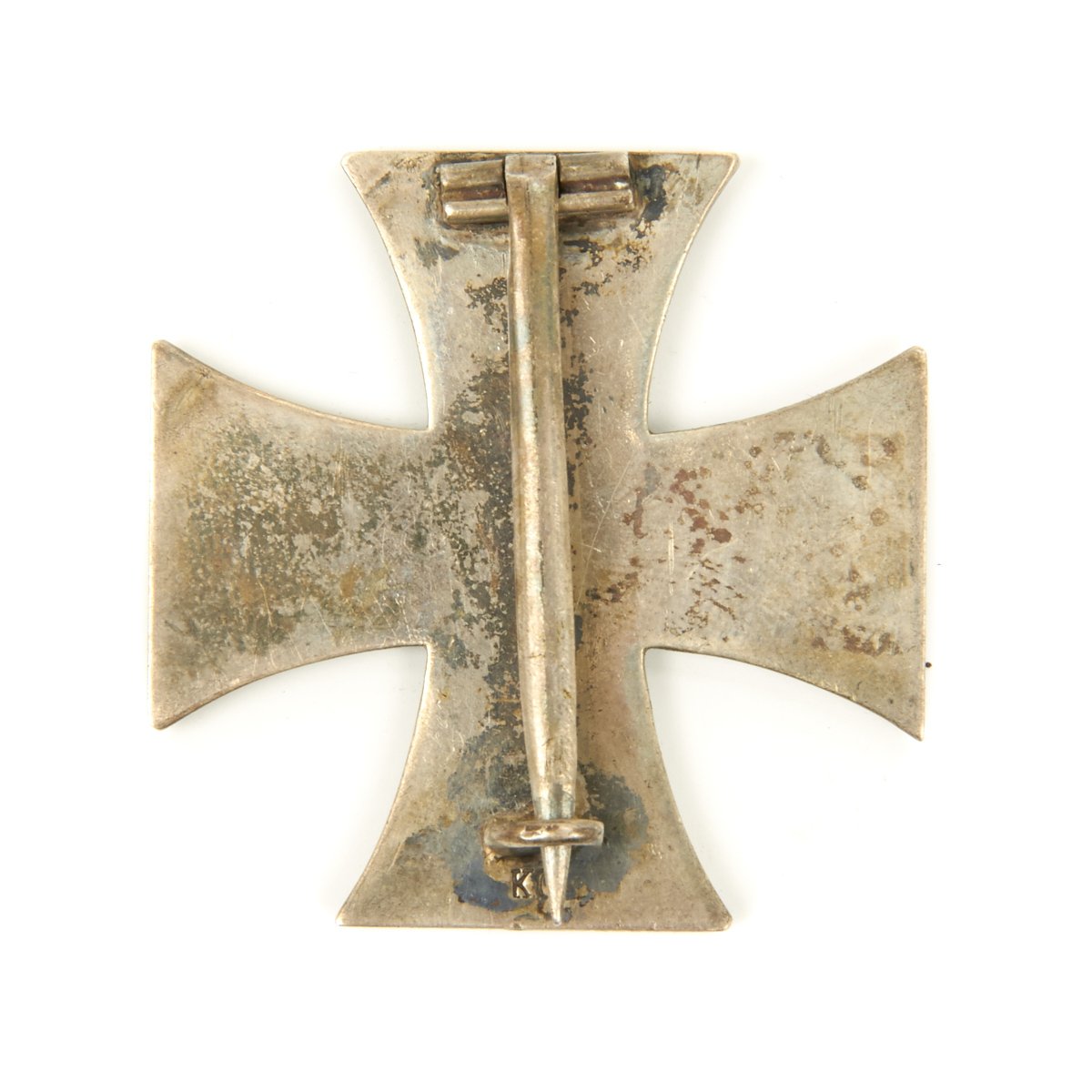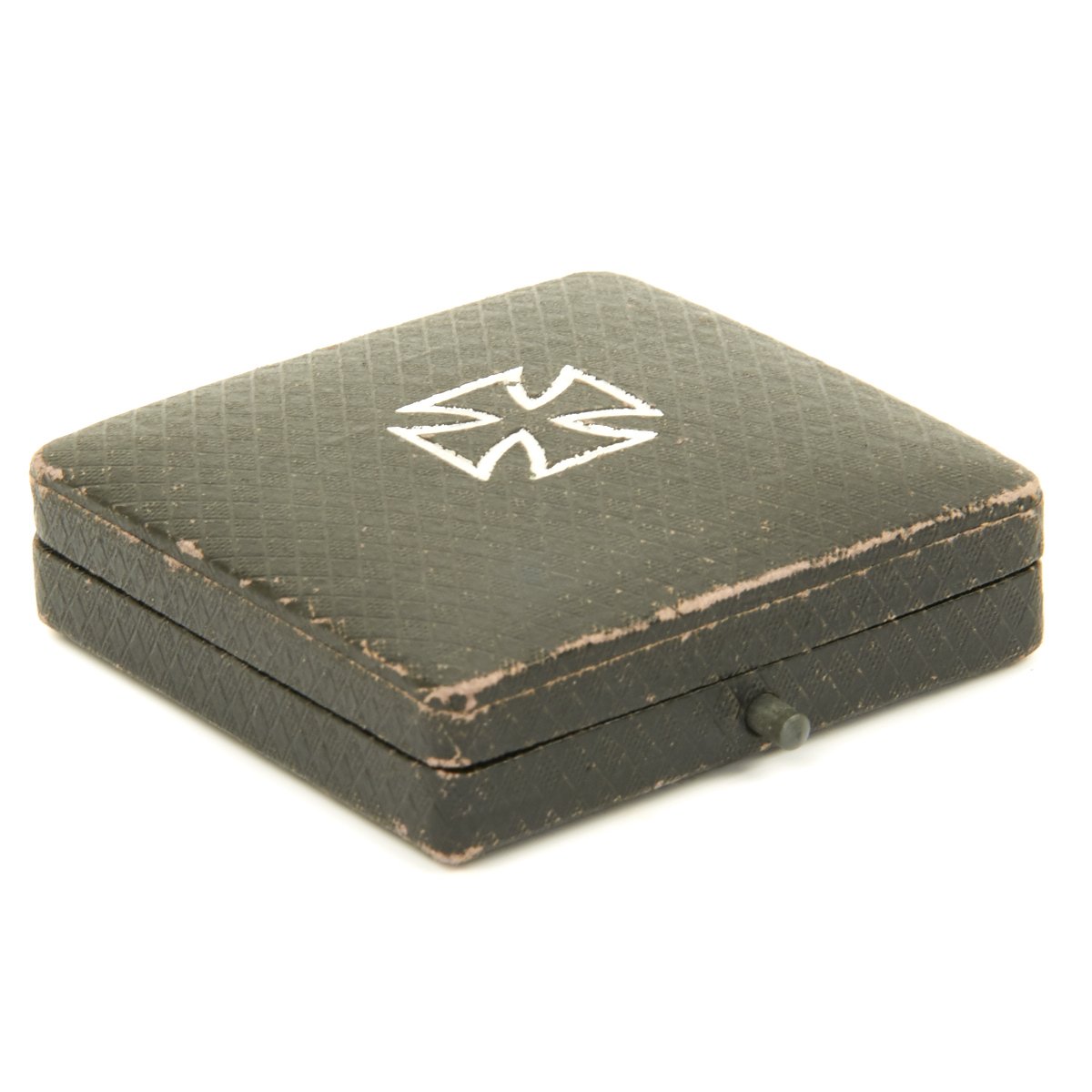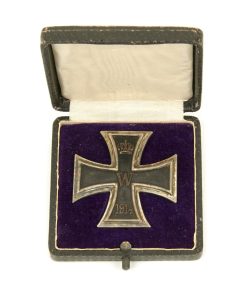Original German WWI Prussian Iron Cross First Class 1914 in Original Case – KO Marked Original Items
$ 550,00 $ 165,00
Original Item: Only One Available. Established by Frederick William in 1813 for gallantry in action, the decoration was revived several times for later conflicts. The bulk of the issues are divided into 1st and 2nd class versions, but a rare and superior ‘Grand Cross’ was also awarded for successful field commanders. During WW1 the lower decoration was freely awarded with 5½ million second class types issued. Originally, the Iron Cross was an award of the Kingdom of Prussia, however given Prussia’s pre-eminent place in the German Empire formed in 1871, it became an award for all of Germany.
The basic design of the WW1 crosses is a central cross patee struck from iron and mounted in a silver frame which has a raised crenulated decorative border. The obverse of the cross bears the date 1914 under a crowned ‘W’ monogram. Second class crosses would have a ring at the top where a ring was attached, and had more markings on the back. The first class award however was meant to attach directly to the front of the uniform, and this example has a double barrel hinge, a soldered catch, and a securing pin. This pin is quite long, extended to the end of the cross. The lower leg of the cross is stamped KO, which signifies it was made by Königliches Münzamt Orden (the Royal Mint), in Berlin.
Please note the edge seam for authentication, which is not present on reproductions. Iron crosses were commonly constructed from an iron core sandwiched in a surrounding two part silver frame, normally the seam of these two silver parts is visible around the edge of the cross as is seen on this fine example. This example is a “flat’ style Iron Cross. Others could be quite “Vaulted” in shape.
The the leatherette case of this 1st Class Iron Cross is in very good condition: even the corners are totally sound. There is a image of the medal embossed in the silver on the lid, and the steel push button catch still works correctly. The interior lid is lined with white ribbon satin and has an impression of the medal in the fabric. The cloth hinge shows almost no wear. The lower case is lined in purple velvet and has a slot to accommodate the medal pin.
This is a fantastic chance to own a solid period example of the most iconic of all Imperial German awards.
Fast Shipping with Professional Packaging
Thanks to our longstanding association with UPS FedEx DHL, and other major international carriers, we are able to provide a range of shipping options. Our warehouse staff is expertly trained and will wrap your products according to our exact and precise specifications. Prior to shipping, your goods will be thoroughly examined and securely secured. We ship to thousands clients each day across multiple countries. This shows how we're dedicated to be the largest retailer on the internet. Warehouses and distribution centres can be located throughout Europe as well as the USA.
Note: Orders with more than one item will be assigned a processing date depending on the item.
Before shipping before shipping, we'll conduct a thorough inspection of the items you have ordered. Today, the majority of orders will be delivered within 48 hours. The delivery time will be between 3-7 days.
Returns
The stock is dynamic and we cannot completely manage it because multiple stakeholders are involved, including our factory and warehouse. So the actual stock may alter at any time. It's possible that you may not receive your order once the order has been made.
Our policy is valid for a period of 30 days. If you don't receive the product within 30 days, we are not able to issue a refund or an exchange.
You can only return an item if it is unused and in the same state as the day you received it. You must have the item in its original packaging.
Related products
Uncategorized
Uncategorized
Uncategorized
Uncategorized
Uncategorized
Uncategorized
Uncategorized
Uncategorized
Uncategorized
Armored Burgonet Helmet & Polearm from Scottish Castle Leith Hall Circa 1700 Original Items
Uncategorized
Uncategorized
Uncategorized
Australian WWII Owen MK1 Machine Carbine SMG Custom Fabricated Replica with Sling Original Items
Uncategorized
Uncategorized
Uncategorized
Uncategorized
